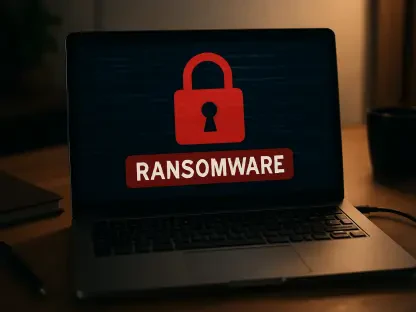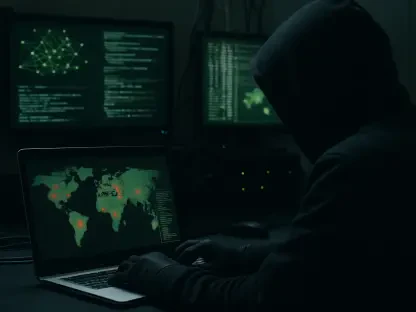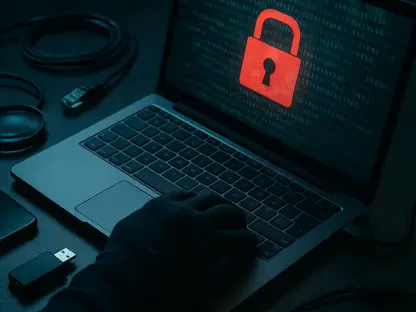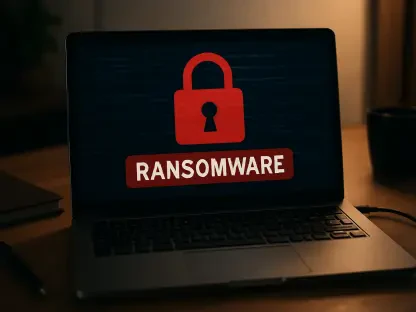Overview of a Growing Cyber Threat in Creative Software
In an era where digital creativity fuels industries worldwide, a startling discovery has emerged: cybercriminals are exploiting trusted 3D modeling software like Blender to deliver devastating malware, targeting unsuspecting users with sophisticated attacks. A recent campaign involving StealC V2 malware, hidden within Blender project files, has been active for at least six months, revealing a dangerous abuse of legitimate platforms. This alarming trend underscores a critical vulnerability in the creative sector, where tools designed for innovation are being weaponized for malicious intent.
The 3D modeling and design industry, integral to gaming, film, and architecture, relies heavily on open-source platforms like Blender for their accessibility and robust community support. However, this very trust and widespread adoption make such software prime targets for attackers seeking to infiltrate systems under the guise of harmless assets. As cybercriminals refine their tactics, the intersection of creativity and cybersecurity demands urgent attention from both industry professionals and security experts.
This report delves into the specifics of the StealC V2 campaign, exploring how malware is embedded in Blender files, the evolving capabilities of the threat, and the challenges in detecting such attacks. It also examines innovative defensive strategies and the broader implications for cybersecurity in creative ecosystems, offering a comprehensive look at an emerging battleground in digital security.
Unpacking the StealC V2 Malware Campaign
Tactics and Distribution Methods
The StealC V2 malware campaign represents a cunning exploitation of Blender 3D project files, specifically targeting users through platforms like CGTrader, a popular marketplace for 3D assets. Attackers distribute tampered .blend files disguised as legitimate content, capitalizing on the trust users place in such platforms. These files, when downloaded and opened, become gateways for malicious activity, exploiting unsuspecting creators and hobbyists.
A critical component of this campaign is Blender’s Auto Run feature, which automatically executes embedded Python scripts upon opening a file. Cybercriminals embed malicious code within these scripts, enabling the malware to initiate an infection chain without any user interaction beyond the initial file access. This method ensures a stealthy entry point, often bypassing initial suspicion or scrutiny from victims.
The distribution strategy highlights a broader trend of leveraging legitimate marketplaces as conduits for malware. By hiding in plain sight among countless genuine assets, attackers maximize their reach, preying on the inherent trust within creative communities. This tactic poses a significant challenge for platform operators tasked with policing content while maintaining an open, user-friendly environment.
Technical Breakdown of the Infection Process
At the heart of the StealC V2 campaign lies a multistage infection process, beginning with a manipulated Rig_Ui.py script embedded in the .blend file. This script serves as the initial trigger, reaching out to remote domains hosted on workers.dev to retrieve a loader. The loader then facilitates the download of additional malicious components, setting the stage for deeper system compromise.
Subsequent stages involve the execution of PowerShell scripts and the deployment of ZIP archives containing Python-based stealers, which are extracted into the Windows temp directory. Persistence is achieved through LNK files, ensuring the malware remains active even after system reboots. Communication with command-and-control (C2) servers occurs via Pyramid infrastructure, a framework often associated with sophisticated threat actors, enabling data exfiltration and further instructions.
This intricate infection chain exemplifies the attackers’ focus on stealth and efficiency, minimizing detection by operating in the background. Each component is designed to blend seamlessly with legitimate system processes, making manual identification incredibly difficult without specialized tools. The technical sophistication of this campaign reflects a deliberate effort to exploit the nuances of Blender’s functionality for malicious gain.
Challenges in Detecting and Mitigating Malware in Blender Files
The deceptive nature of malicious .blend files poses a significant hurdle for cybersecurity defenses, as these files appear benign and often execute their payloads without overt signs of compromise. Many users, unaware of the risks, fail to scrutinize downloaded assets, especially when sourced from reputable platforms. This inherent trust, combined with background execution tactics, allows malware to operate undetected for extended periods.
Beyond individual user behavior, the open-source ecosystem surrounding software like Blender presents systemic challenges. The collaborative, transparent nature of such platforms, while a strength for innovation, also creates vulnerabilities that attackers exploit with ease. Traditional security tools, often designed for more conventional threats, struggle to adapt to these novel attack vectors, leaving gaps in protection.
Addressing these issues requires a paradigm shift in how threats within creative software are approached. Standard antivirus solutions may not flag embedded scripts or recognize the malicious intent behind seemingly harmless files. As a result, both users and security vendors must prioritize education and develop specialized detection mechanisms to counter the unique risks posed by malware in 3D modeling environments.
Evolving Capabilities and Accessibility of StealC V2
StealC V2 has undergone significant enhancements since its promotion on underground forums earlier this year, expanding its data theft capabilities to an unprecedented scope. The malware now targets over 23 browsers, more than 100 plugins, 15 desktop wallets, and a wide array of messaging, VPN, and email clients. This broad attack surface ensures that virtually no digital asset or credential is safe from its reach.
What makes this threat even more concerning is its affordability, priced at just $200 per month or $800 for a six-month subscription. Such low costs democratize access to advanced cyber tools, enabling even low-tier threat actors with minimal technical expertise to launch sophisticated attacks. This accessibility fuels a proliferation of campaigns, amplifying the overall risk to individuals and organizations alike.
The implications of this trend extend beyond immediate financial or data loss, pointing to a future where cybercrime becomes increasingly pervasive. As tools like StealC V2 become commonplace in underground markets, the barrier to entry for malicious activities continues to lower, necessitating a reevaluation of how cybersecurity resources are allocated to combat both high-end and opportunistic attackers.
Defensive Innovations and Industry Response
In response to the StealC V2 campaign, cybersecurity firms have begun deploying cutting-edge strategies, with Morphisec leading the charge through a deception-based protection platform. This approach involves injecting decoy credentials into memory and browser storage, designed to trigger prevention mechanisms when accessed by malware. Upon detection, the system terminates StealC processes before data theft or persistence can occur.
This innovative tactic represents a shift toward proactive defense, moving beyond reactive measures to disrupt threats at their earliest stages. Deception technology not only mitigates immediate risks but also provides valuable intelligence on attacker behavior, enabling security teams to refine their strategies. Such advancements are critical in an environment where traditional defenses often lag behind rapidly evolving malware.
Industry-wide, there is a growing recognition of the need for collaborative efforts to secure creative software ecosystems. Vendors, platform operators, and user communities must work together to establish best practices, such as disabling Auto Run features by default and enhancing content vetting processes. These collective actions, paired with technological innovation, form a robust line of defense against the exploitation of trusted tools.
Future Implications and Cybersecurity Trends
The exploitation of platforms like CGTrader and open-source tools like Blender signals a troubling evolution in cybercrime, where trusted environments become conduits for attacks. This trend suggests that no digital space, regardless of its intended purpose, is immune to malicious intent, pushing cybersecurity professionals to rethink how they safeguard diverse ecosystems. The creative industry, in particular, must brace for an increase in targeted campaigns as attackers refine their methods.
Attribution of the StealC V2 campaign to Russian-speaking threat actors aligns with broader concerns about state-affiliated or sponsored cyber operations, often aimed at espionage or financial gain. This geopolitical dimension adds complexity to the threat landscape, as motivations extend beyond mere profit to include strategic objectives. Monitoring these actors’ tactics over the coming years, from 2025 to 2027, will be crucial for anticipating future attack patterns.
Looking ahead, the democratization of malware tools like StealC V2 foreshadows a surge in both the frequency and diversity of cyber threats. Defensive strategies will likely evolve to emphasize preemptive measures, such as deception and behavioral analysis, while industry collaboration becomes paramount. Securing creative software will require not just technological solutions but also a cultural shift toward heightened vigilance among users and stakeholders.
Closing Thoughts on a Persistent Challenge
Reflecting on the findings, the StealC V2 campaign uncovered a deeply concerning tactic of embedding malware within Blender files, orchestrated by adept threat actors with ties to Russian-speaking groups. The campaign’s success in evading detection for months highlighted significant gaps in traditional security approaches. It also exposed how the affordability and enhanced capabilities of malware broadened the scope of potential attackers.
Moving forward, actionable steps emerged as critical necessities. Disabling Auto Run features in software like Blender, regularly monitoring for indicators of compromise, and adopting deception-based defenses offered tangible ways to mitigate risks. Industry collaboration also stood out as a vital component, with shared intelligence and best practices forming a foundation for resilience.
Ultimately, the path ahead demanded a dual focus on innovation and education. Equipping users with knowledge about emerging threats, while investing in advanced security tools, provided a balanced strategy to counter evolving cyber risks. This approach ensured that the creative potential of digital tools remained untainted by the shadow of malicious exploitation.









